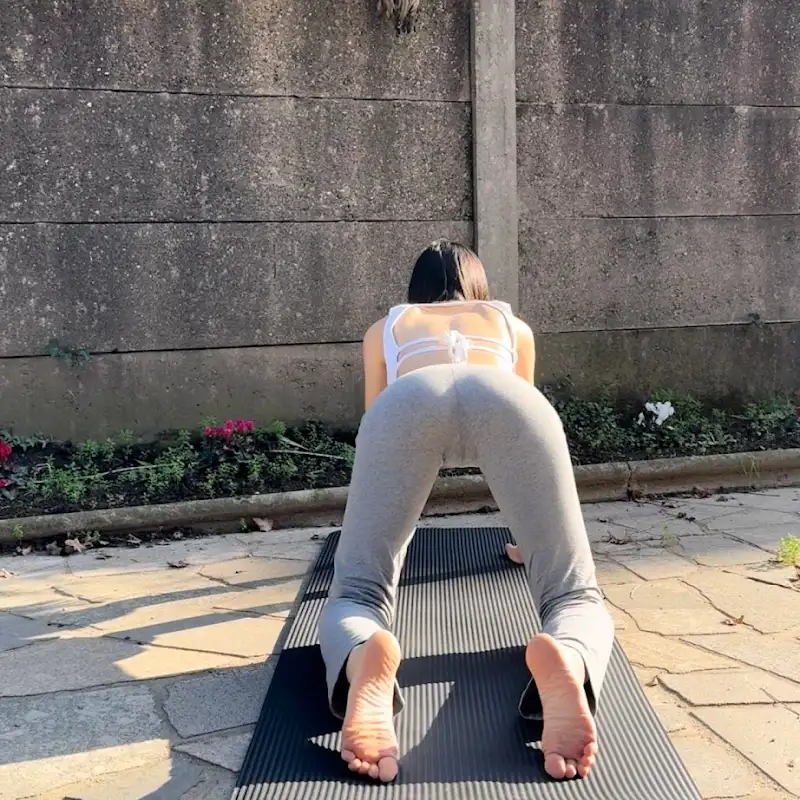
Pregnancy is a miraculous journey, filled with excitement, changes, and sometimes challenges. As a woman’s body grows and nurtures new life, it naturally goes through physical, emotional, and hormonal shifts. These changes, while beautiful, can sometimes feel overwhelming. This is where pregnancy yoga comes in — a gentle, mindful, and nurturing practice that supports both mother and baby.
Why Pregnancy Yoga?
Yoga has long been known to strengthen the body, calm the mind, and balance emotions. During pregnancy, these benefits become even more important. Gentle yoga poses help expectant mothers improve circulation, ease back pain, strengthen muscles that support the growing belly, and prepare the body for labor. On the mental side, yoga encourages relaxation, reduces stress, and fosters a deeper connection between mother and child.
Breathing exercises, meditation, and simple stretching movements make pregnancy yoga a safe and effective way to stay active while honoring the body’s new needs. Instead of pushing limits, the goal is to cultivate softness, awareness, and strength in a balanced way.
The Benefits of Pregnancy Yoga
- Improved Flexibility and Strength
As the baby grows, extra pressure is placed on the spine, hips, and pelvis. Pregnancy yoga stretches these areas gently, helping release tightness. At the same time, it strengthens muscles that will support the body during labor and recovery. - Reduced Back Pain and Swelling
Many pregnant women experience lower back pain and swollen ankles. Yoga helps by improving blood circulation, aligning the posture, and relieving tension in the back. - Better Sleep
Pregnancy can sometimes make sleep difficult. Relaxation techniques and gentle movements in yoga help calm the nervous system, making it easier to rest deeply. - Connection with the Baby
When practicing yoga, mothers learn to listen closely to their bodies. Through mindful breathing and quiet moments, they also connect with the baby, feeling every movement as a shared experience. - Preparation for Labor
Breathing practices, relaxation techniques, and pelvic-opening poses prepare the body and mind for childbirth. Women who practice pregnancy yoga often report feeling more confident and calm during labor. - Emotional Balance
Hormonal changes during pregnancy can affect mood. Yoga’s calming influence helps release anxiety and cultivates positive emotions.

Safety First: Things to Remember
While yoga is highly beneficial during pregnancy, it’s important to practice safely:
- Always consult your doctor before beginning.
- Avoid poses that put pressure on the belly or require lying flat on the back for long periods (especially after the first trimester).
- Move slowly and gently; pregnancy yoga is not about pushing limits.
- Stay hydrated and listen to your body — rest whenever you need to.
- Use props like pillows, bolsters, or yoga blocks for support.
Safety First: Things to Remember
While yoga is highly beneficial during pregnancy, it’s important to practice safely:
- Always consult your doctor before beginning.
- Avoid poses that put pressure on the belly or require lying flat on the back for long periods (especially after the first trimester).
- Move slowly and gently; pregnancy yoga is not about pushing limits.
- Stay hydrated and listen to your body — rest whenever you need to.
- Use props like pillows, bolsters, or yoga blocks for support.
Simple Pregnancy Yoga Poses to Try
Here are a few beginner-friendly poses you can practice today.
1. Cat-Cow Stretch (Marjaryasana-Bitilasana)
- Get on your hands and knees.
- Inhale, drop your belly down, lift your chest and tailbone (Cow).
- Exhale, round your back, tuck your chin and tailbone (Cat).
This pose releases tension in the spine and improves flexibility.
2. Bound Angle Pose (Baddha Konasana)
- Sit with your back straight.
- Bring the soles of your feet together and let your knees drop outward.
- Hold your feet and breathe deeply.
This pose opens the hips and relaxes the pelvis.
3. Child’s Pose (Balasana)
- Kneel on the floor, spread your knees wide, and bring your big toes to touch.
- Gently lower your chest and forehead to the ground, arms stretched forward.
This resting pose calms the mind and relieves back pain.
4. Warrior II (Virabhadrasana II)
- Stand with your feet wide apart.
- Turn one foot outward and bend the knee into a lunge.
- Stretch your arms out to the sides and gaze over your front hand.
This strengthens the legs, builds endurance, and promotes stability.
5. Side-Lying Savasana
- Lie on your left side with a pillow between your knees.
- Support your head with a cushion.
This is a restorative pose for deep relaxation and safe for late pregnancy.

Breathing Exercises for Pregnancy
Breath is at the heart of yoga. Pregnancy yoga emphasizes mindful breathing to prepare mothers for labor and ease stress.
- Deep Belly Breathing: Place one hand on your belly. Inhale slowly through the nose, feeling your belly rise. Exhale gently through the mouth.
- Ujjayi Breath: Slightly constrict the throat and breathe deeply, creating a soft ocean-like sound. This brings focus and calm.
- Golden Thread Breath: Inhale through the nose, then exhale slowly through pursed lips as if blowing out a candle. This technique is often helpful during labor.
Meditation and Mindfulness
Pregnancy is not only a physical experience but also an emotional and spiritual one. Meditation practices during yoga allow mothers to connect with the miracle of life growing inside them. Simple affirmations such as “I am strong. I am calm. I am ready to welcome my baby.” help build confidence and peace of mind.
Mindfulness — being present in each breath and each moment — is a gift that yoga teaches. It allows mothers to embrace pregnancy not as a challenge, but as a journey of love and transformation.

A Sample Pregnancy Yoga Flow
Here’s a short sequence you can follow at home:
- Sit comfortably and close your eyes. Place hands on the belly and take five deep breaths.
- Cat-Cow stretch (5 rounds).
- Bound Angle Pose (hold for 1 minute with steady breathing).
- Warrior II (hold each side for 30 seconds).
- Child’s Pose (rest for 1–2 minutes).
- Gentle side stretches while seated.
- Side-Lying Savasana for 5–10 minutes to relax.
This flow takes around 15–20 minutes and is safe for most stages of pregnancy, but always check with your doctor first.
Building a Routine
Practicing pregnancy yoga doesn’t require long hours. Even 10–20 minutes a day can make a big difference. Some women prefer morning yoga to feel energized, while others enjoy evening practice to unwind. The key is consistency and listening to your body’s rhythm.
You can also join online pregnancy yoga classes or practice with a friend. Sharing the journey makes it more joyful.

The Emotional Side of Pregnancy Yoga
One of the most beautiful aspects of pregnancy yoga is how it encourages mothers to slow down and connect — not only with their baby but also with themselves. The modern world often pushes women to keep moving, working, and “doing.” Yoga, however, is an invitation to simply be.
Many women describe pregnancy yoga as a safe space where they can release fear and embrace love. In every pose, every breath, and every meditation, they remind themselves that they are strong, capable, and surrounded by support.
Conclusion
“Yoga with me today💦Pregnancy yoga” is more than just an exercise routine. It’s a practice of self-care, mindfulness, and preparation for the incredible journey of motherhood. Through gentle movements, calming breathwork, and moments of stillness, pregnancy yoga nurtures both mother and baby.
So, unroll your mat, breathe deeply, and invite peace into your body and heart. With every stretch and every breath, you are not just practicing yoga — you are creating space for new life, love, and joy.



